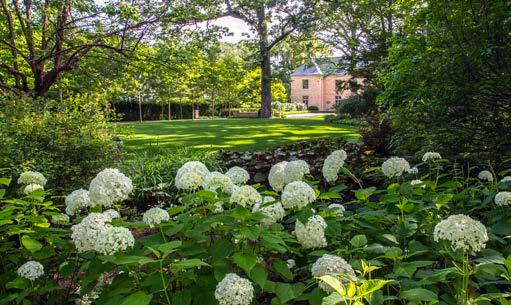1 minute read
Krasl Sculpting Community
Next Article
The Krasl Art Center (KAC) has been an important cultural anchor in Saint Joseph, Michigan, since a group of artists banded together in 1962. Since the original building and grounds were constructed in 1979, the KAC has steadily acquired more land, and in 2016, they set out to create a unified campus to support the diverse art and sculptures they curate.


Guided by the museum’s roots, the grounds are centered on a new, flexible open space. The plan incorporates whimsical patterning, new circulation routes, and opportunity for new buildings, all while being sensitive to the residential context.
Guided by the museum’s roots, the grounds are centered on a new, flexible open space. The plan incorporates whimsical patterning, new circulation routes, and opportunity for new buildings, all while being sensitive to the residential context. The design solution organizes the site around an ellipse that originates from Richard Hunt’s sculpture. The ellipse rises out of the earth to form an event lawn and main path entry before receding again into the earth. This gentle oval represents the open nature of the museum, which is free to all.

Nature Play Guidelines
Chris Gent
Mauro Crestani
Alison Zehr
Robin Moore
LOCATION
Cook County, Illinois
CLIENT
Forest Preserves of Cook County, Department of Conservation and Experiential Programming

Photos, illustrations, and a variety of suggested criteria and ideas enrich each page. The guidelines were written and designed to reflect the FPCC’s mission and commitment to nature, children, creativity, fun, and learning.
The FPCC Nature Play Guidelines encourage site managers to think like a landscape architect when designing nature play areas — to imagine the site both as part of the overall landscape and as a landscape unto its own. They provide staff the information and inspiration needed to create a Nature Play area best suited to their site, while ensuring that the design, use, and management stays within a set of articulated standards for excellence, consistency, and efficacy.
The document opens with the benefits of outdoor play, the role of Nature Play in the FPCC, and Nature Play principles. The focus of the guidelines is on best practices for siting; designing; activating, and maintaining the space; risk management; resource development; and evaluation.
Photos, illustrations, and a variety of suggested criteria and ideas enrich each page. The guidelines were written and designed to reflect the FPCC’s mission and commitment to nature, children, creativity, fun, and learning.


